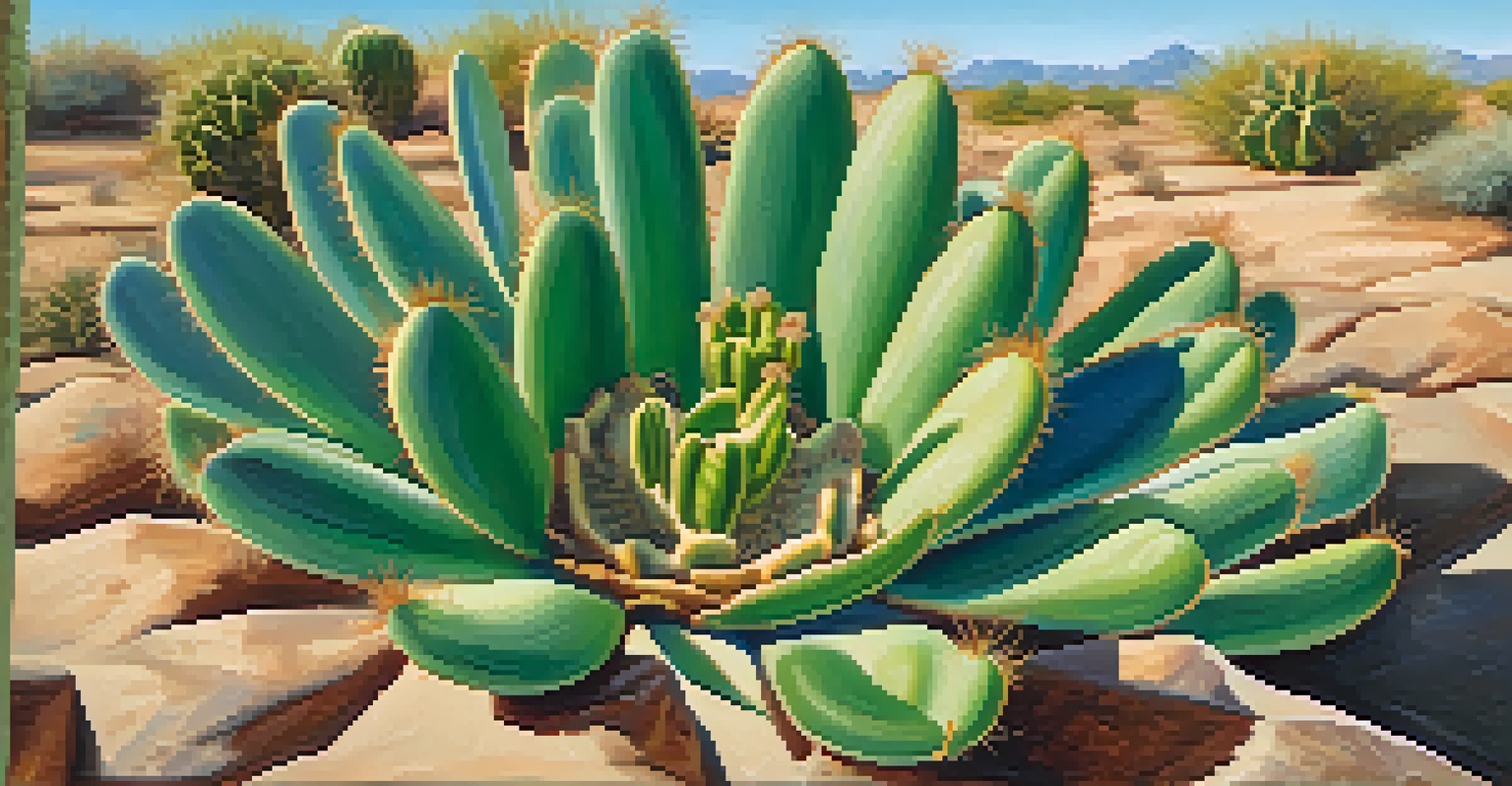Entheogens and Healing: Indigenous Approaches to Wellness

Understanding Entheogens: Nature's Healing Tools
Entheogens are naturally occurring substances that induce altered states of consciousness. Many indigenous cultures have utilized these plants for centuries as tools for healing and spiritual growth. By connecting deeply with nature, these communities believe that entheogens can facilitate profound personal insights and emotional release.
The use of psychedelics is not just about the substances themselves; it's about the rituals and community support that accompany them.
For instance, ayahuasca, a brew made from Amazonian plants, is often used in ceremonial contexts to promote mental clarity and emotional healing. Participants embark on a journey that can reveal hidden traumas, ultimately leading to transformative experiences. This relationship with nature and spirit is integral to understanding how these substances are used in wellness.
Moreover, the use of entheogens is not merely about the substances themselves; it's about the rituals and community support that accompany them. These experiences are often framed within a broader cultural and spiritual context, enhancing their therapeutic potential.
Indigenous Wisdom: A Holistic Approach to Wellness
Indigenous approaches to wellness often emphasize balance and harmony within oneself and with the environment. Unlike conventional medicine, which may isolate symptoms, these traditions consider the whole person—mind, body, and spirit. This holistic perspective is vital when integrating entheogens into healing practices.

For example, in many Native American cultures, healing rituals often involve communal participation, storytelling, and connection to the land. These practices foster a sense of belonging and purpose, which are critical components of mental and emotional health. By situating entheogen use within a broader context of community and spirituality, these cultures enhance their effectiveness.
Entheogens as Healing Tools
Entheogens, used by indigenous cultures, facilitate healing and spiritual growth through altered states of consciousness.
Furthermore, this holistic approach provides a framework for understanding the interconnectedness of all life. It encourages individuals to reflect on their relationships with themselves, others, and the world, paving the way for deeper healing and personal transformation.
Cultural Significance of Entheogens in Healing Practices
In many indigenous cultures, entheogens hold deep cultural significance beyond their psychoactive effects. They are often viewed as sacred gifts from the Earth, imbued with spiritual power and wisdom. This reverence shapes how these substances are approached in healing rituals.
Healing is not just the absence of disease; it is a state of balance, harmony, and connection to oneself and the world.
Take the example of peyote, a cactus used by Native American tribes in their spiritual ceremonies. The consumption of peyote is not just about the experience; it is a ritualistic act that fosters connection with the divine and community. This cultural backdrop enhances the healing process, making it a shared journey rather than an isolated experience.
Moreover, this cultural significance can help protect these practices from commercialization and misuse. By understanding and respecting the traditions surrounding entheogens, we can appreciate their role in indigenous healing without appropriating them.
The Role of Rituals in Indigenous Healing with Entheogens
Rituals play a crucial role in the healing process involving entheogens. They create a structured environment that fosters safety, respect, and intention, allowing participants to navigate their experiences with guidance. This is essential, as altered states of consciousness can be overwhelming without proper support.
In many indigenous practices, rituals include prayers, music, and communal gatherings. For instance, a ceremonial circle may be formed where participants share their intentions and experiences, reinforcing the communal aspect of healing. This collective energy can amplify individual healing journeys, creating a powerful shared experience.
Holistic Indigenous Wellness
Indigenous approaches to wellness emphasize a holistic perspective that integrates mind, body, and spirit for comprehensive healing.
Additionally, rituals often serve as a bridge between the physical and spiritual realms. They help participants establish connections to their ancestors, nature, and the universe, enhancing the overall therapeutic experience. This sacred context transforms the use of entheogens from a mere substance to a profound spiritual journey.
Healing Trauma: Entheogens as Catalysts for Change
Many indigenous cultures have long recognized the potential of entheogens to aid in trauma healing. These substances can facilitate access to suppressed memories and emotions, allowing individuals to confront and process their pain. This can be particularly beneficial for those who have experienced significant trauma.
For example, research has shown that psilocybin, a compound found in certain mushrooms, can help individuals with PTSD by enabling them to revisit and reframe traumatic experiences. The guided use of entheogens in a supportive setting can lead to breakthroughs that traditional therapies may struggle to achieve.
Moreover, the communal aspect of these healing practices provides a network of support. Participants often leave with a greater sense of understanding and connection, which can be instrumental in their recovery journey. By healing together, individuals not only process their own trauma but also foster a sense of solidarity and hope.
Modern Science Meets Indigenous Practices: A Collaborative Future
As the interest in entheogens grows, modern science is beginning to explore their therapeutic potential, often looking to indigenous practices for guidance. Researchers are increasingly recognizing the value of these time-honored traditions in understanding how these substances can be safely and effectively integrated into modern wellness approaches.
For instance, clinical trials on substances like MDMA and psilocybin are showing promising results for conditions such as anxiety, depression, and PTSD. By combining insights from both indigenous wisdom and scientific research, we can create a more holistic approach to mental health and healing.
Ethics in Entheogen Use
Approaching entheogen use requires sensitivity to cultural contexts and ethical considerations to prevent exploitation and ensure respect.
However, this collaboration must be done with respect and ethical considerations. Ensuring that indigenous communities are acknowledged and compensated for their knowledge is crucial in this evolving landscape. This partnership can lead to innovative healing modalities that honor both tradition and modern science.
Ethical Considerations in the Use of Entheogens for Healing
As we explore the healing potential of entheogens, ethical considerations become increasingly important. The commercialization and appropriation of these sacred practices can lead to exploitation and misrepresentation of indigenous cultures. It's essential to approach this topic with sensitivity and respect.
Understanding the cultural context of entheogen use is vital for anyone interested in these practices. Engaging with indigenous voices and ensuring their perspectives are prioritized can help prevent cultural dilution. This commitment to ethics fosters a more respectful exchange of knowledge and practices.

Moreover, establishing frameworks for responsible use—such as community-led ceremonies and informed consent—can ensure that entheogens are utilized in ways that honor their traditional significance. By prioritizing ethical considerations, we can cultivate a responsible approach to integrating these powerful tools into modern wellness practices.